Cathode placement
Stimulation target
Cervical
C2
Face, below the maxillary region
C2–C4
Neck, and shoulder to hand
C4–C7
Forearm to hand
C7–T1
Anterior shoulder
Thoracic
T1–T2
Chest wall
T5–T6
Abdomen
T7–T9
Back and legs
T10–T12
Leg limb
Lumbar/sacral
L1
Pelvis
T12, L1
Foot
L5, S1
Foot, lower limb
S2 to S4
Pelvis, rectum
Sacral hiatus
Coccyx
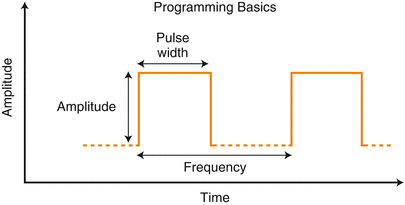
Fig. 9.1
Programming basics
9.2 Technical Overview
The basic concept of using electrical current to modulate the neurotransmission of pain signals involves creating an electrical field that changes synaptic connections. Thinking of membrane as an uneven capacitor, application of a charge can create a membrane potential change. This results in a cathode-driven depolarization, and an anode-driven hyperpolarization (Fig. 9.2). This strategy of using cathodes and anodes concurrently allows the clinician to shape the current to achieve the desired therapeutic stimulation, as previously described by Holsheimer. Using a paddle lead configuration, we can illustrate the vertical and horizontal mapping that can form the patient response created by changing the number and position of positive and negative contacts (Fig. 9.3).
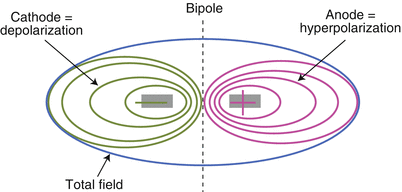
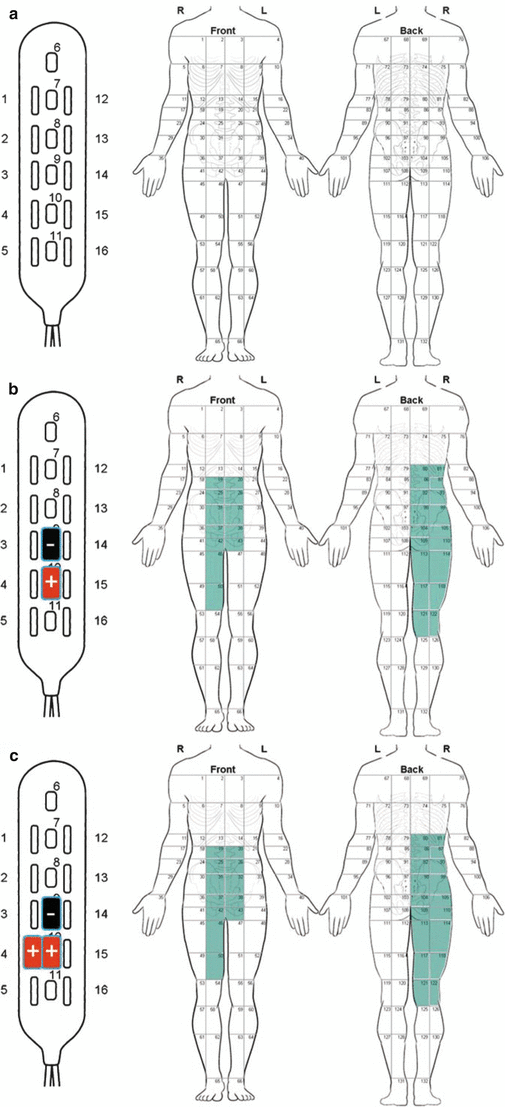
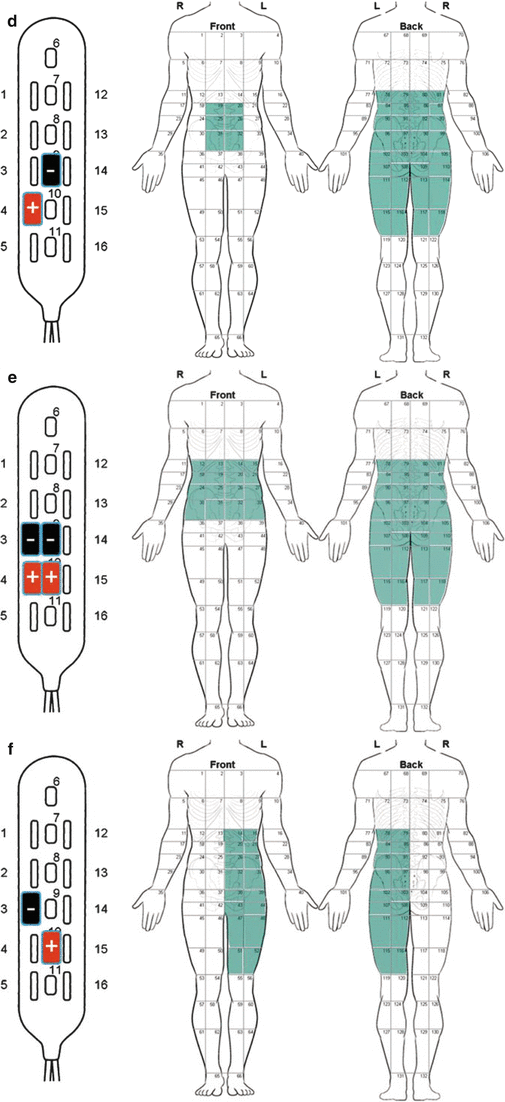
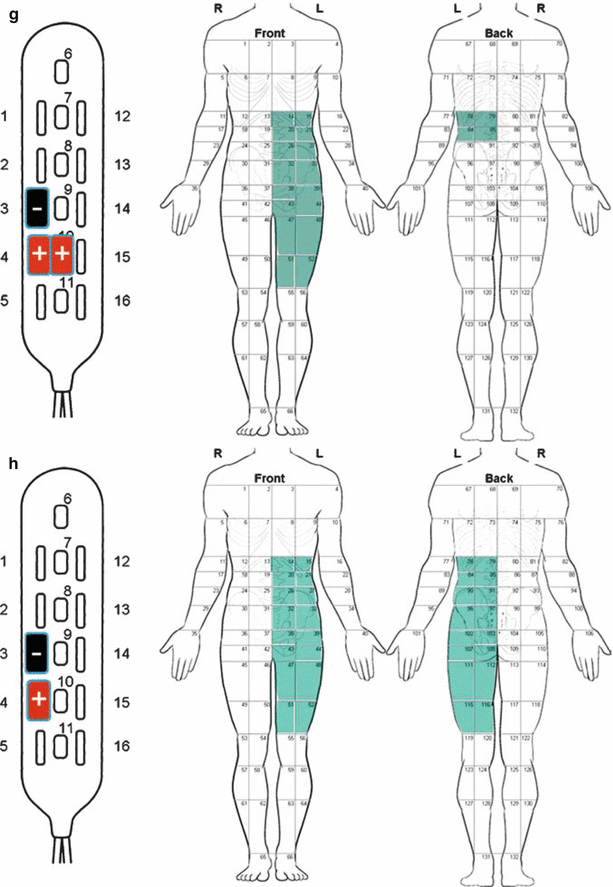

Fig. 9.2
Depolarization/hyperpolarization



Fig. 9.3
(a) Clinical example of programming, array off. (b) Bipolar array. (c) Dual anode with cathode. (d) Staggered array. (e) Dual matched cathode/anode. (f) Staggered array. (g) Shifting of the field. (h) Lateral array (Reprinted with permission of St. Jude Medical; all rights reserved)
To shape the field, the clinician must understand several components:
1.
Where is the lead position? The target location of the lead will determine the stimulation possibilities. The implanter should review the anterior-posterior view and the lateral view to determine the patient’s response to changes in lead activation.
2.
How many contacts are on the lead? An octipolar lead will allow many more possible combinations of programming than a quadripolar lead. A paddle lead with multiple contacts may allow lead screening in both vertical and horizontal orientations.
3.
How many leads or contacts are in the spine? By adding a second or third percutaneous lead, the number of programming options will increase dramatically. This is also true for changing from a simple quadripolar surgical lead to a more complex tripolar or pentapolar paddle lead. These increased contact systems lead to an exponential improvement in possible electrode combinations to shape the field.
4.




The system must contain one cathode to drive current. A single cathode drives current to that area of the system. The addition of cathodes to the system leads to dispersion of the current. A general rule is that the number of cathodes is directly proportional to the concentration of current in an area of neural tissue. In some peripheral nerve tissues, the addition of multiple cathodes will result in current being spread through the area, increasing the number of small nerve fibers exposed to the current.
Stay updated, free articles. Join our Telegram channel

Full access? Get Clinical Tree







